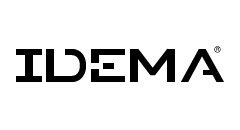

- SEAGATE SEATOOLS SHORT DST FAIL FULL
- SEAGATE SEATOOLS SHORT DST FAIL PC
- SEAGATE SEATOOLS SHORT DST FAIL WINDOWS
The client tried to test the hard drive’s health using SeaTools, Seagate’s hard disk diagnostic software.
SEAGATE SEATOOLS SHORT DST FAIL WINDOWS
And instead of the familiar Windows logo, our client saw a boot error message reading, “No boot disk has been detected or disk has failed.” The drive failed a short DST test at startup.
SEAGATE SEATOOLS SHORT DST FAIL PC
The client in this case came to our Seagate hard disk repair specialists when their PC stopped booting.

Severe firmware glitches can cause a hard drive to die, requiring attention from firmware repair specialists in a data recovery lab. is that as the tests grow more intensive and complex, they can actually cause the hard drive’s firmware-sort of the drive’s own hidden “operating system”-to develop glitches.

Essentially, any red flags your hard drive may shoot up through its internal S.M.A.R.T testing may go wholly unnoticed-no matter how dire.Īnother disadvantage of S.M.A.R.T.
SEAGATE SEATOOLS SHORT DST FAIL FULL
In addition, due to the lack of full standardization, the hard drive can have difficulty relaying its findings, even if the computer has a S.M.A.R.T-enabled motherboard. While S.M.A.R.T is standardized to some extent among HDD manufacturers, many attributes are still vendor-specific and are not extensively documented. Unfortunately, S.M.A.R.T isn’t always as helpful as intended. The goal of S.M.A.R.T is to anticipate hard disk failure and shoot off some digital warning flares to the user if need be. These parameters range from read error rates and seek time performances to the internal temperature of the drive. S.M.A.R.T measures a wide variety of operating parameters. (Self-Monitoring, Analysis, and Reporting Technology) to keep track of their own health. | line: 0x9f2c53c72e8bced8, c:\bs_hudson\workspace\23\products\imager\demon\main.CLICK HERE to learn more about data recovery pricing When S.M.A.R.T. | file: c:\bs_hudson\workspace\23\products\imager\demon\main.cpp:738 | line: 0x30ba355f9fd4ffbd, c:\jenkins_agent\workspace\mod-disk-backup\650\product\core\resizer\archive3\utils.cpp:364, `anonymous-namespace'::ArchiveWriterImpl::CoroutineFunc | function: `anonymous-namespace'::ArchiveWriterImpl::CoroutineFunc | file: c:\jenkins_agent\workspace\mod-disk-backup\650\product\core\resizer\archive3\utils.cpp:364 | line: 0xa340ffd3416335cf, c:\jenkins_agent\workspace\mod-disk-backup\650\product\core\da_api\backup.cpp:353, da_backup::Commit | file: c:\jenkins_agent\workspace\mod-disk-backup\650\product\core\da_api\backup.cpp:353 | line: 0x5d5406763c32a94, c:\bs_hudson\workspace\23\products\imager\archive\impl\operations\utils.cpp:582, TrueImage::Archive::MakeDestinationUnavailableError | function: TrueImage::Archive::MakeDestinationUnavailableError | file: c:\bs_hudson\workspace\23\products\imager\archive\impl\operations\utils.cpp:582 Crucial disks: Crucial Storage Executive Toshiba disks: Toshiba PC Diagnostic Tool Utility Kingston SSDs: Kingston SSD Toolbox, Kingston SSD Manager Intel SSDs: Intel Solid State Drive Toolbox HGST disks: HGST Windows Drive Fitness Test (WinDFT) Western Digital drives: Data Lifeguard Diagnostic for Windows CHKDSK C: /F will check for file system errors on drive C: The OS drive often has other hidden / system partitions which do not have a drive letter but may cause this type of issue.ĭedicated diagnostic utilities from the disk manufacturers take the longest time to complete the checks, but provide the most accurate methods of checking whether the disk is good or needs replacement: Note: that CHKDSK only works for drives / partitions that have a Windows drive letter assigned, i.e. What options have you used for CHKDSK for the Source & Target drives? What is the context for this error message, how many disk drives are involved in the backup task, how many partitions present on those disk drives? Mike, welcome to these public User Forums.


 0 kommentar(er)
0 kommentar(er)
